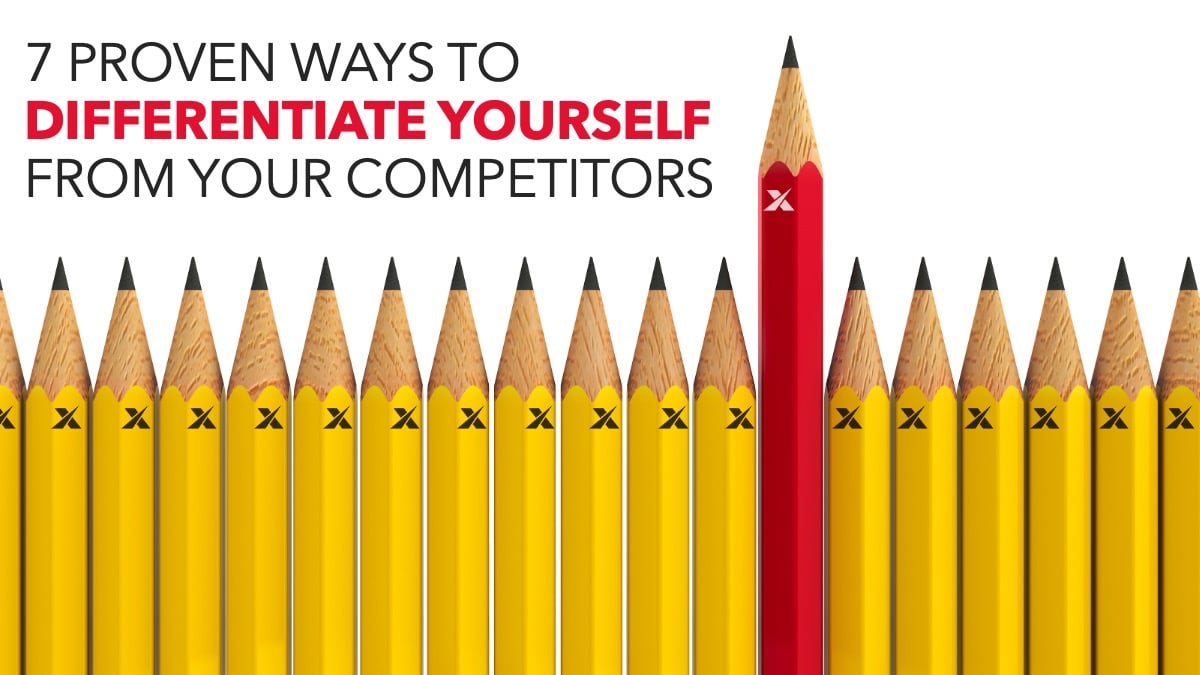Differentiate yourself and overcome sales resistance using as many or all of these seven forms of validation.
Differentiate yourself from your competition by doing just one thing: demonstrate your credibility.
Chances are good that many prospects have decided whether they buy from you very early in the sales process. So, how do you overcome an inherent lack of trust? How do you separate yourself from the rest of the salespeople calling on your prospect? All things considered, bring your witnesses with you on your sales calls and prove your case with a variety of validation.
A validation is anything that corroborates your claims about your products or services. It does several things:
- Affirms the claims you’ve made to the prospect
- Showcases your reputation
- Develops confidence in the mind of the prospect
- Builds a prospect’s trust in you and your products/services
For these reasons, here are seven validations to help you sell more:
1. Differentiate with Stories
Without question, people love stories. Basecamp, the project management company, built a sizable customer base by posting stories about their customers every month. Turns out, this is a great strategy that they have employed for years with great success.
- Tip: Interview your top customer and ask permission to tell their story.
2. How about Testimonials?
A testimonial is typically a written endorsement from a happy, satisfied customer. Frankly, it’s one of the smartest tools a sales professional can have in their arsenal. Slack, the communication platform, uses testimonials quite effectively to build credibility with new buyers. They’re enjoyed tremendous success with this strategy, so, it appears, they will continue this practice.
- Tip: Make it easy for your customers to give you a testimonial. Say: “You talk. I’ll type!”
3. Differentiate with Quotes
A quote is a brief statement by someone about his or her personal experience working with you, your product, your company, etc. Simply ask for feedback regularly and listen well to your customers. REI actually showcases their gear on a blog page. Customer can contribute stories and about their experiences and others can comment driving engagement. As a result, REI has very engaged customers and increases customer retention and brand loyalty.
- Tip: When they say something good about you, reply with: “May I quote you on that?”
4. Try Some Case Studies
A case study is a detailed account of a company, industry, person, or project over a given amount of time. Obviously, the content demonstrates your competency helping a company or individual achieve a specific objective.As a result, that information would be highly relevant to your target market. For example, the technology behemoth, SAP, has a massive section of case studies they refer to as the Customer Engagement.
- Tip: Convert your case study into a webinar to showcase your customer’s results.
5. Differentiate with Metrics
Metrics typically come in two major forms. The first are statistics and facts that demonstrate positive movement with a customer who has used your services. In addition, the statistics show a need for using your services. HubSpot does both posting metrics to validate what they offer and why it’s important to you.
- Tip: Track and measure progress from the beginning of a project with customers.
6. Offer Samples
We love free or discounted stuff. If it suits your business model, offer a sample or trial. Specifically, this allows the potential buyer to experience it firsthand. Gillette, the shaving company, offers coupons for discounts, which attracts new buyers.
- Tip: Offer samples to target companies that fit your ideal customer profile.
7. Showcase Your Customers
Happy satisfied customers are your greatest point of leveragability. Therefore, don’t wait until the last minute to pull them out. Instead, bring them along with you on your next sales call to prove your worth. ZenDesk, an e-commerce company, showcases its customers brilliantly.
- Tip: Segregate your lists to optimize your time and effort.
When a prospect considers making a purchase decision, they want to go with the lowest risk option. Being handed a list of quotes, a case study or ringing endorsements from happy, satisfied customers can make all the difference at any stage of the sales process. As a result, you differentiate yourself and reduce the risk for the buyer.

